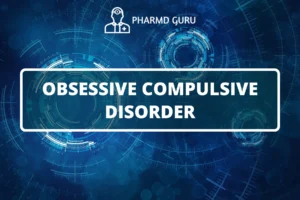Neuralgia refers to a condition characterized by intense, shooting or stabbing pain along the course of a nerve. It can be caused by various factors and can significantly impact an individual’s quality of life. Understanding the etiopathogenesis, or underlying causes and mechanisms, of neuralgia is crucial for effective treatment. In this article, we will explore the etiopathogenesis of neuralgia and discuss the pharmacotherapy options used in its management.
SCROLL DOWN TO THE BOTTOM OF THIS PAGE FOR ACTUAL NOTES.
Table of Contents
- Introduction
- Understanding Neuralgia
- Etiopathogenesis of Neuralgia
- Trigeminal Neuralgia
- Postherpetic Neuralgia
- Diabetic Neuralgia
- Pharmacotherapy for Neuralgia
- Anticonvulsant Medications
- Antidepressant Medications
- Topical Medications
- Opioid Analgesics
1. Introduction
Neuralgia refers to severe and often debilitating pain that occurs along the course of a nerve. It can be caused by various factors, including nerve damage, irritation, or inflammation. Neuralgia can affect any part of the body, but certain types, such as trigeminal neuralgia, are more commonly reported.
2. Understanding Neuralgia
Neuralgia is characterized by sudden, sharp, and intense pain that follows the path of a specific nerve. The pain can be triggered by even mild stimuli, such as touch or movement. Neuralgia can significantly impact an individual’s daily activities, causing discomfort and affecting their overall well-being.
3. Etiopathogenesis of Neuralgia
The etiopathogenesis of neuralgia can vary depending on the underlying cause. Let’s explore some common types of neuralgia and their etiology:
4. Trigeminal Neuralgia
Trigeminal neuralgia is a type of neuralgia that affects the trigeminal nerve, which is responsible for transmitting sensations from the face to the brain. It is often caused by compression or irritation of the trigeminal nerve root by a blood vessel or other structures. Conditions such as multiple sclerosis or facial trauma can also contribute to trigeminal neuralgia.
5. Postherpetic Neuralgia
Postherpetic neuralgia is a type of neuralgia that occurs as a complication of herpes zoster, commonly known as shingles. It is characterized by persistent pain that continues even after the shingles rash has healed. The varicella-zoster virus, which causes chickenpox and shingles, can damage the nerves and lead to postherpetic neuralgia.
6. Diabetic Neuralgia
Diabetic neuralgia, also known as diabetic neuropathy, is a type of neuralgia that affects individuals with diabetes. Prolonged high blood sugar levels can damage the nerves, leading to neuropathic pain. Diabetic neuralgia can manifest as burning, tingling, or shooting pain, primarily in the feet and hands.
7. Pharmacotherapy for Neuralgia
Pharmacotherapy plays a vital role in managing neuralgia by providing pain relief and improving an individual’s quality of life. The following medications are commonly used:
8. Anticonvulsant Medications
Anticonvulsant medications, such as gabapentin and pregabalin, are frequently prescribed for neuralgia. These medications work by stabilizing overactive nerves and reducing abnormal pain signals. They can effectively alleviate neuropathic pain associated with conditions like trigeminal neuralgia and diabetic neuralgia.
9. Antidepressant Medications
Certain classes of antidepressant medications, such as tricyclic antidepressants (e.g., amitriptyline) and selective serotonin-norepinephrine reuptake inhibitors (e.g., duloxetine), are also used in the management of neuralgia. These medications help modulate pain signals and can provide relief for neuropathic pain.
10. Topical Medications
Topical medications, such as lidocaine patches or creams, can be applied directly to the affected area to provide localized pain relief. These medications work by numbing the nerves and reducing pain sensations.
11. Opioid Analgesics
In severe cases of neuralgia, opioid analgesics may be prescribed for short-term pain relief. These medications work by binding to opioid receptors in the brain and spinal cord, effectively reducing pain signals. However, the use of opioids requires careful monitoring due to their potential for dependence and side effects.
ACTUAL NOTES:




